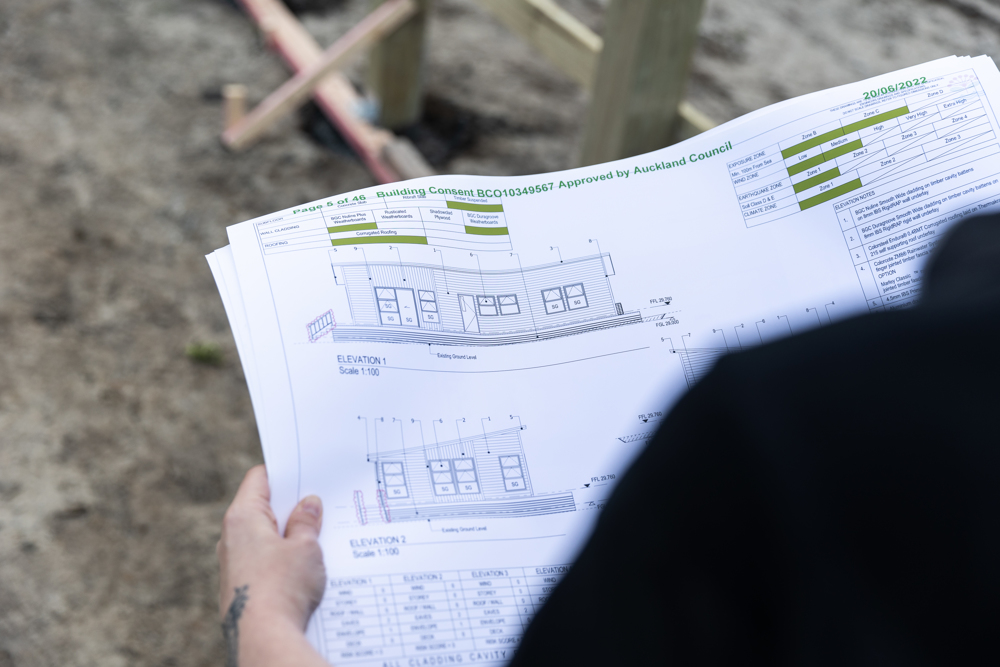Experts agree that there is a sore need to reform the building consent process, exploring which of the options being investigated by the Government are the best way forward

Better efficiency and consistency across the country is what Building and Construction Minister Chris Penk hopes to achieve by reforming the building consent system.
“New Zealand has some of the least affordable housing in the world, which has dire social and economic implications. At the heart of the issue is unreasonably high building costs and a cumbersome consenting system which saps productivity and disincentivises growth and development,” Penk says.
“The building consent system is intended to protect homeowners from defective building work by requiring work to be inspected and consented by a Building Consent Authority (BCA).”
He says while we have a single building code that is supposed to apply consistently to all building work nationally, there are currently 67 BCAs across the country, each with different practices and approaches.
“There are many instances of builders submitting the exact same plans to different BCAs and finding considerable additional costs and delays result from differing interpretations of the building code.
“This is especially challenging for large scale home builders and off-site manufacturers, along with modular and prefab builders, who work across regional boundaries. For example, in a recent survey of Master Builders Association members 80 per cent reported having to deal with multiple BCAs, and 66 per cent experienced delays.”
Penk says the Government is beginning discussion on options to replace the current BCA system to establish a more consistent and streamlined model, with options including:
- Voluntary consolidation – allowing councils to group together to deliver building control functions. There are already a number of councils who are pooling some resources but barriers exist to full integration. This approach focuses on removing these barriers.
- Regional BCAs – establishing a smaller number of relatively large regional BCAs to replace the current 66 district and city council BCAs. This approach focuses on improving consistency and forming entities with the critical mass to drive economies of scale.
- Single point of contact – setting up a single point of contact for builders to submit plans to. Building inspection may be contracted out to existing BCAs or private consenting providers, creating competition and encouraging specialisation.
Dr Stuart Donovan of Motu Economic & Public Policy Research favours option 3.
“I see considerable merit in establishing a single point of contact for builders to submit plans to,” he says.
“This model would result in the creation of an entity that could ensure consistent application of the building code nationwide and create a system that had sufficient scale to justify investment in processes and support. As the building code is applied nationally, it makes sense to manage its implementation nationally, too.
“Importantly, I expect this entity would manage contracts with Building Consent Authorities and private consenting providers to undertake monitoring and compliance activities, rather than these contracts being managed by the builders themselves. Local and international experience, e.g. with leaky buildings in NZ and the Grenfell Tower fire in the UK, suggests there are significant conflicts of interests and risks involved in systems where builders can directly contract private consenting providers themselves.”
Concerns around private companies are echoed by Engineering New Zealand Te Ao Rangahau Chief Executive, Dr Richard Templer.
“Introducing private companies into the system could compromise outcomes of public safety, quality and liability, as happened previously,” Templer says.
However he agrees the building consents system needs to be reformed and is encouraged to see the Government taking action to address the issue.
“An efficient and effective building consent system with appropriate checks and balances – underpinned by principles of accountability, clarity as to who is qualified for different kinds of work, and public safety – should be the goal of any reform in this area.
“Minister Penk has observed there is variation in consenting processes. An option here is for producer statements to be formalised within consenting processes. Building and fire design work – which have a clear degree of complexity – should also require a producer statement from a Chartered Professional Engineer. Combined, these measures could easily serve to improve quality, accountability and standardisation,” Templer says.
Environmental Planning expert Carolyn Hill, who lectures at the University of Waikato, highlights the other opportunities that this reform could bring.
“This proposed regulatory reform is not in isolation – it’s the latest iteration of long political wrestling with questions of development, infrastructure and environment. This work must happen together with Resource Management Act reform, with new thinking about what needs to be regulated, how, and where to frame it up in legislation.
“A holistic approach is critical for genuine efficiencies – and actually good outcomes – for New Zealand and New Zealanders,” Hill says.
She states that the reform centres on two key questions: how construction (and housing in particular) can be made more affordable, and who is going to carry the liability?
“Reform of the building consent system is critical to address one aspect of unaffordability – being the costs associated with long processing times and inconsistency between Building Consent Authorities. But if Aotearoa New Zealand is going to take housing seriously, it needs to address tax reform and commit to public sector housing provision as well.
“It’s one thing to say liability can be carried by the private sector, and another to actually make that happen – especially as problems only rear their heads decades down the line. Lessons from the 1990s Leaky Buildings saga will be critical here if we are to avoid serious adverse outcomes for future taxpayers,” Hill says.
Donovan agrees that an essential consideration are the liability settings across the whole building system.
“The lines of financial responsibility would hopefully clearly define, for example, where insurance companies submit claims for refunds due to content failure,” he says.
“Again, the single point of contact would seem to provide a useful model that supports the efficient pooling of risks such that liability rests in the appropriate place.
“If we get these policy reforms right, then I am optimistic that they will – along with other policy reforms, like Going for Housing Growth – help to improve housing affordability in New Zealand.”












